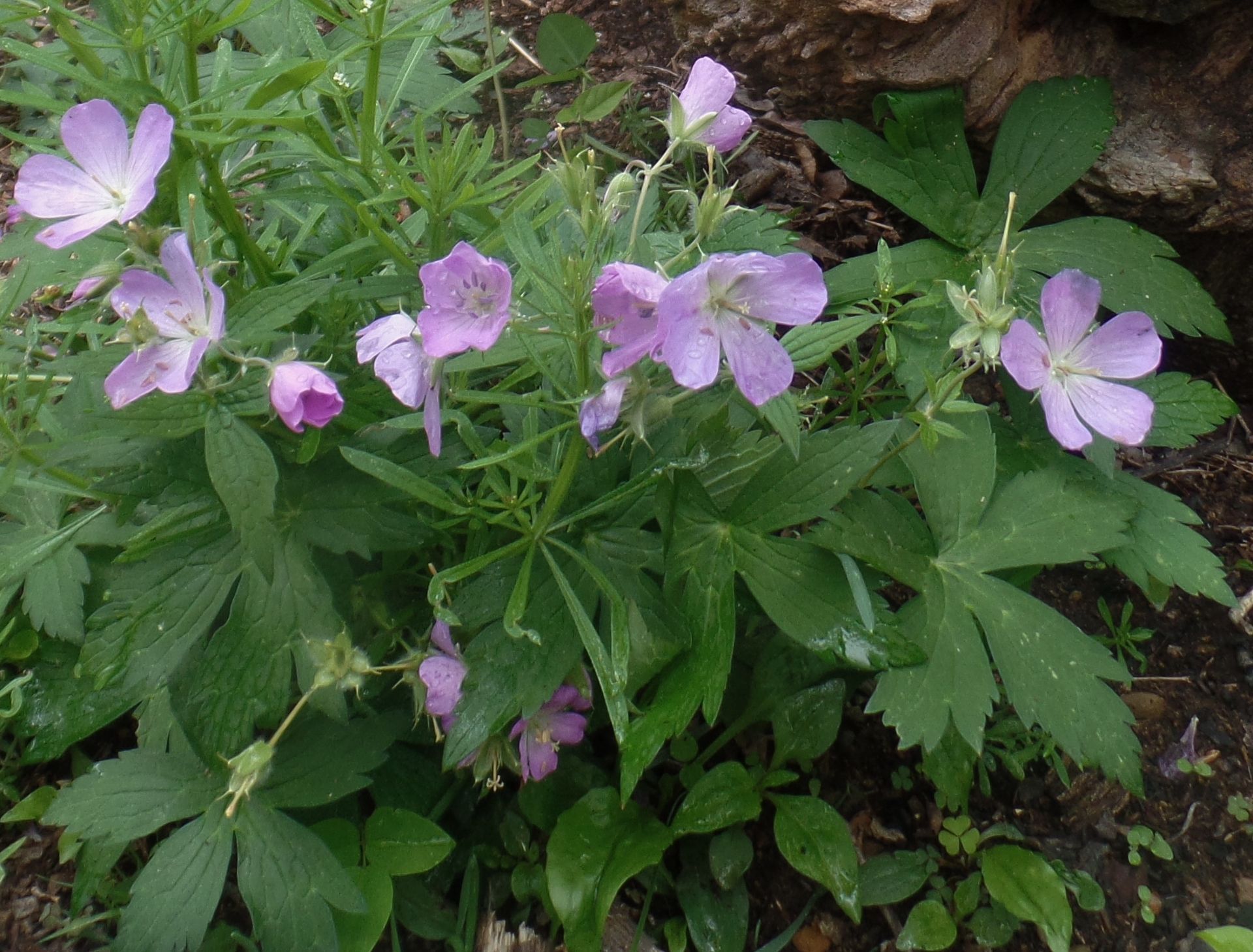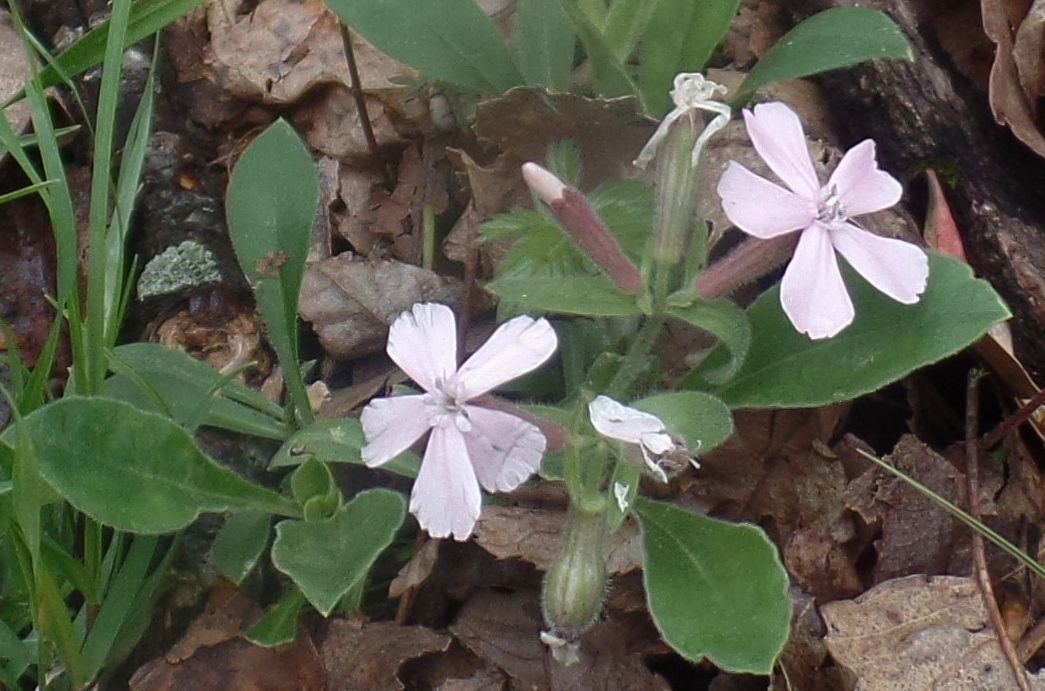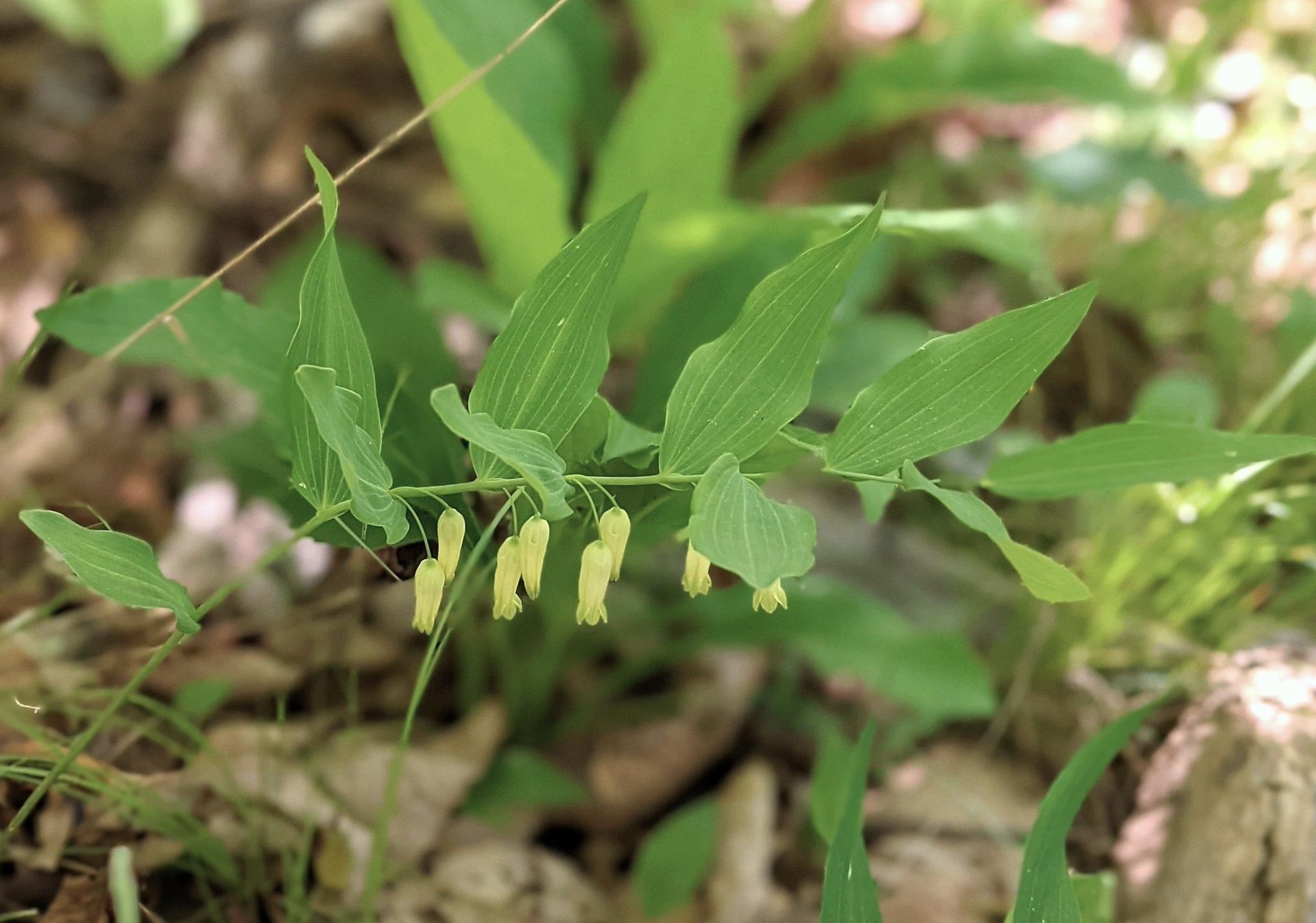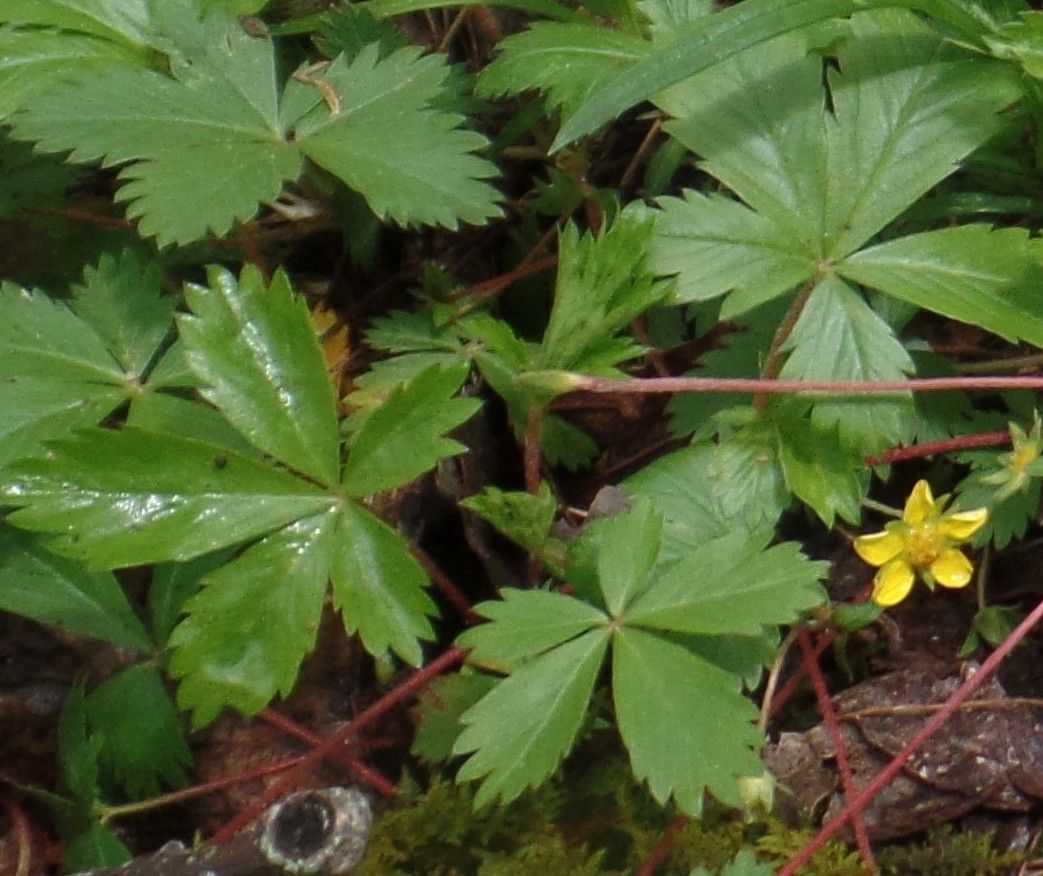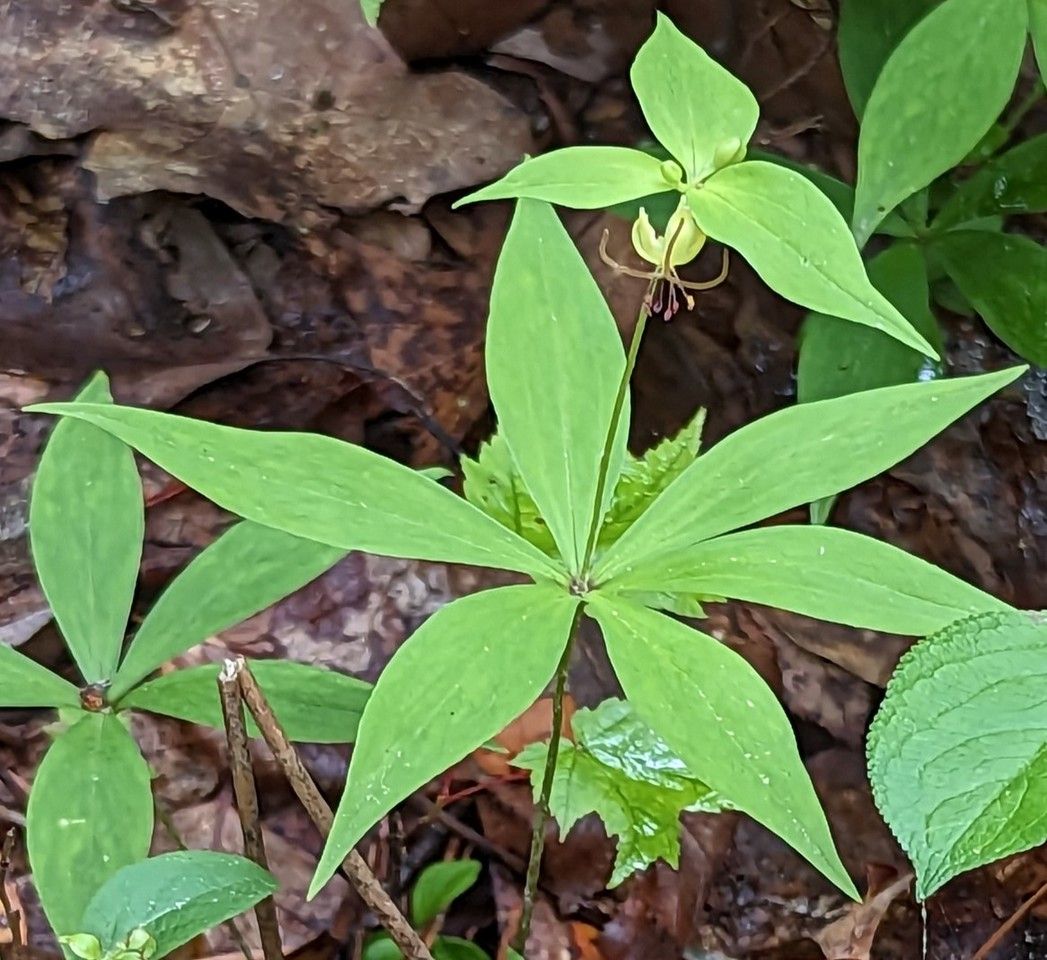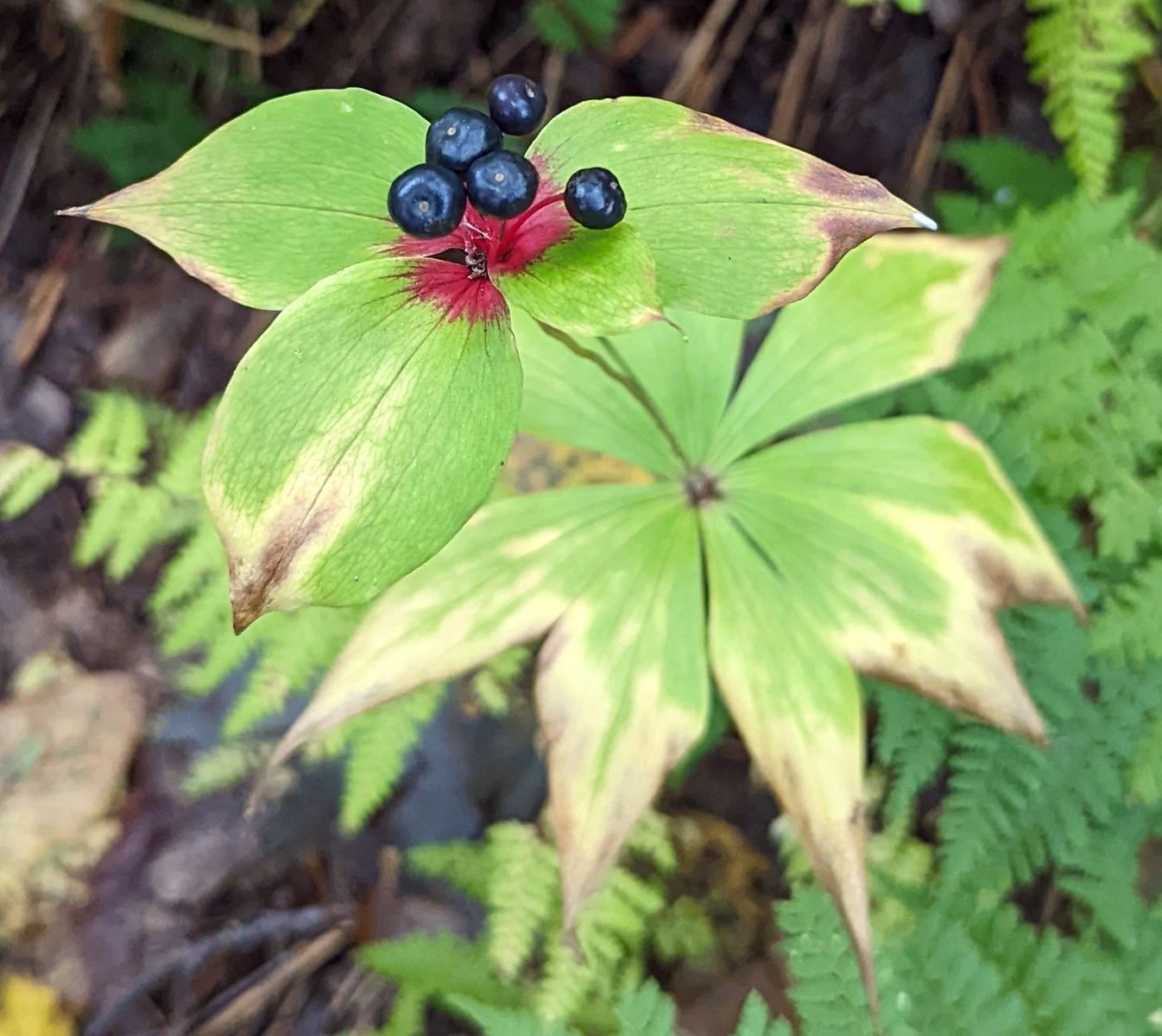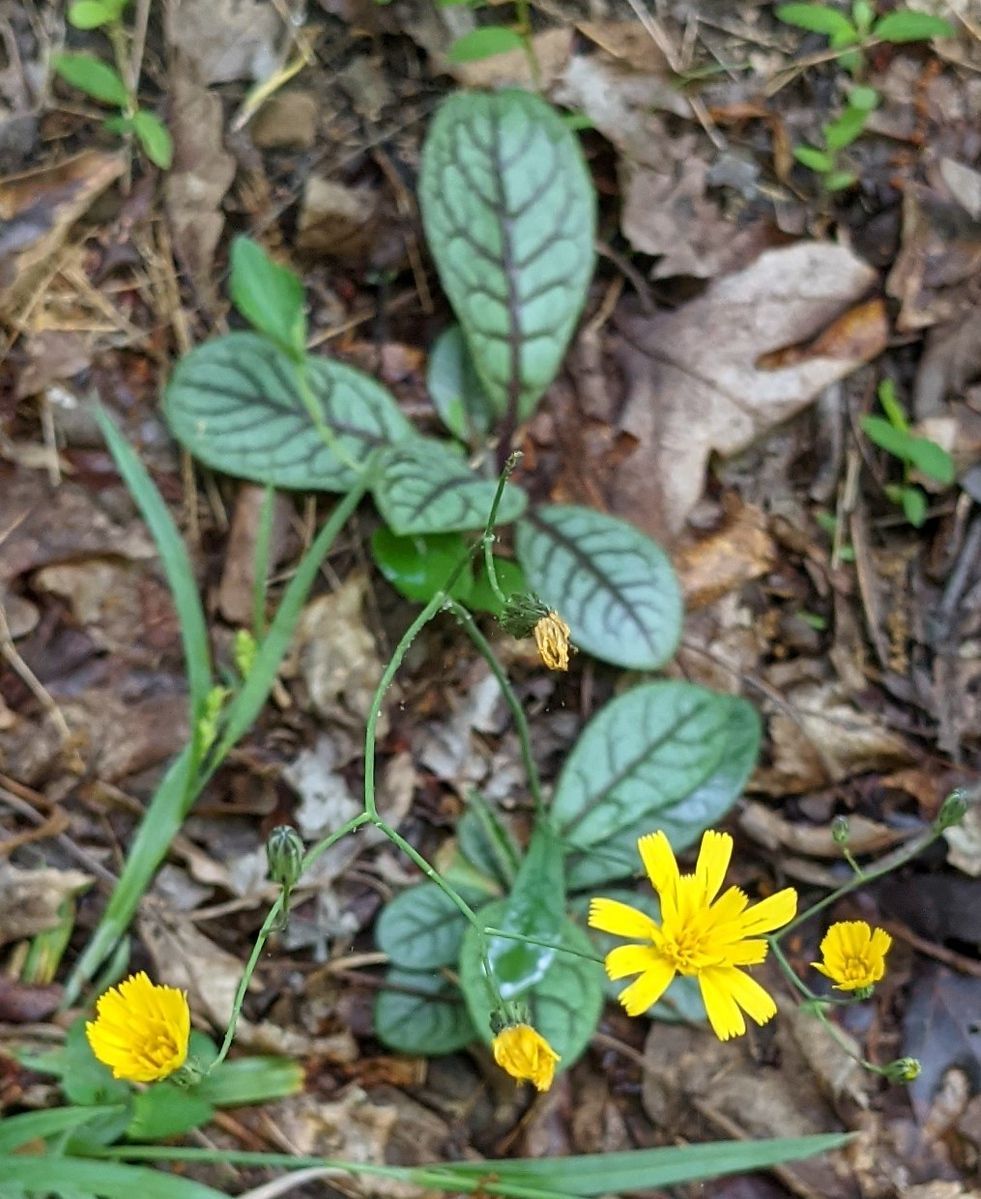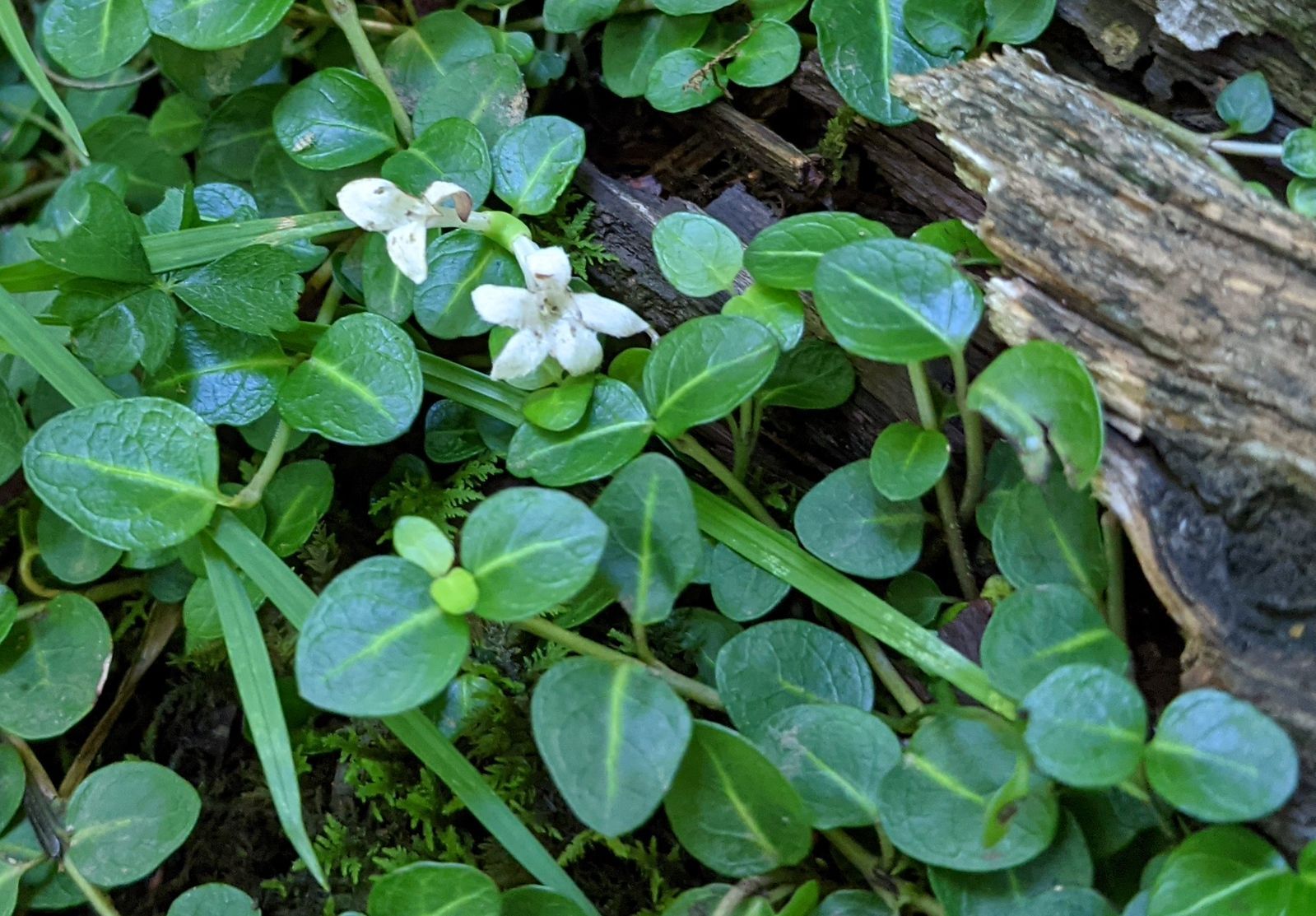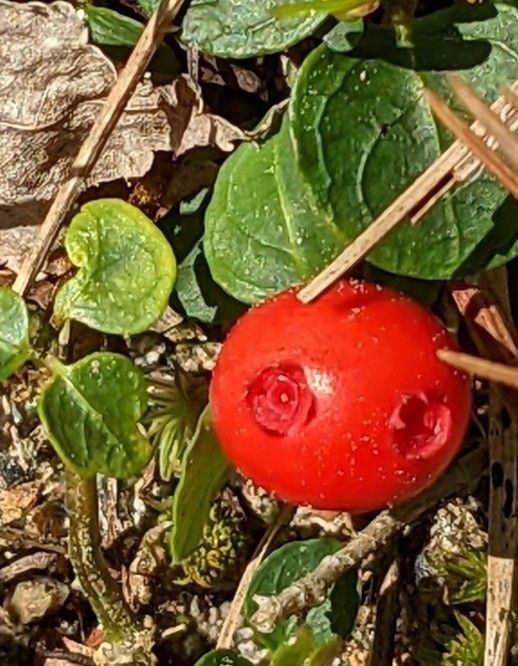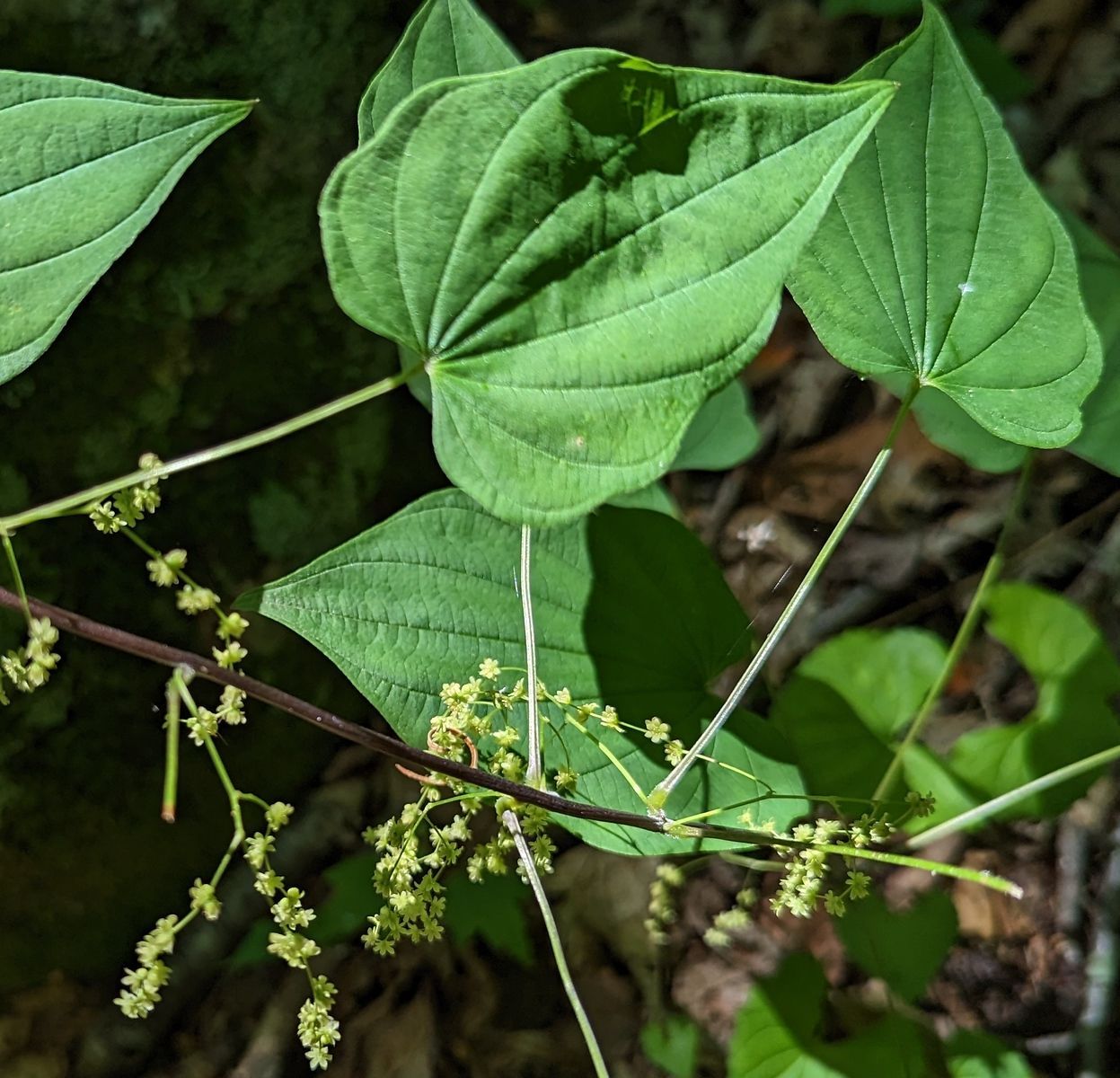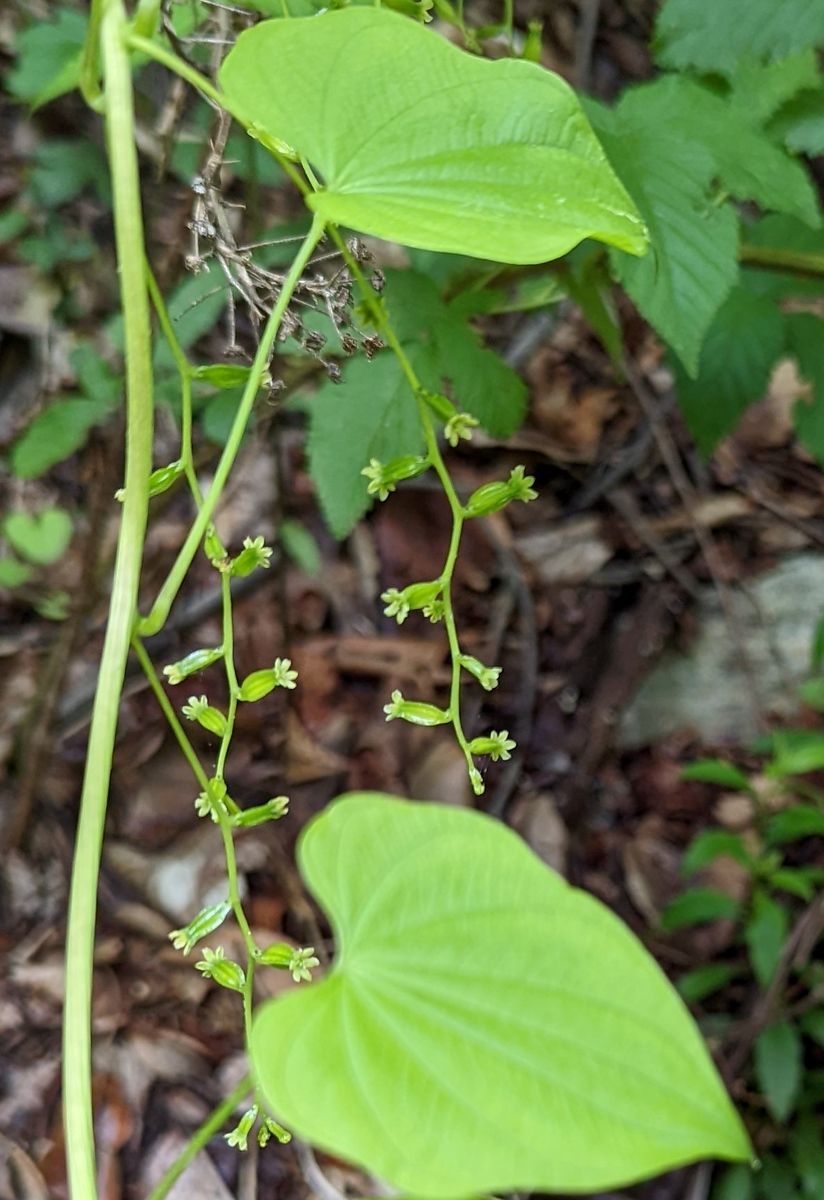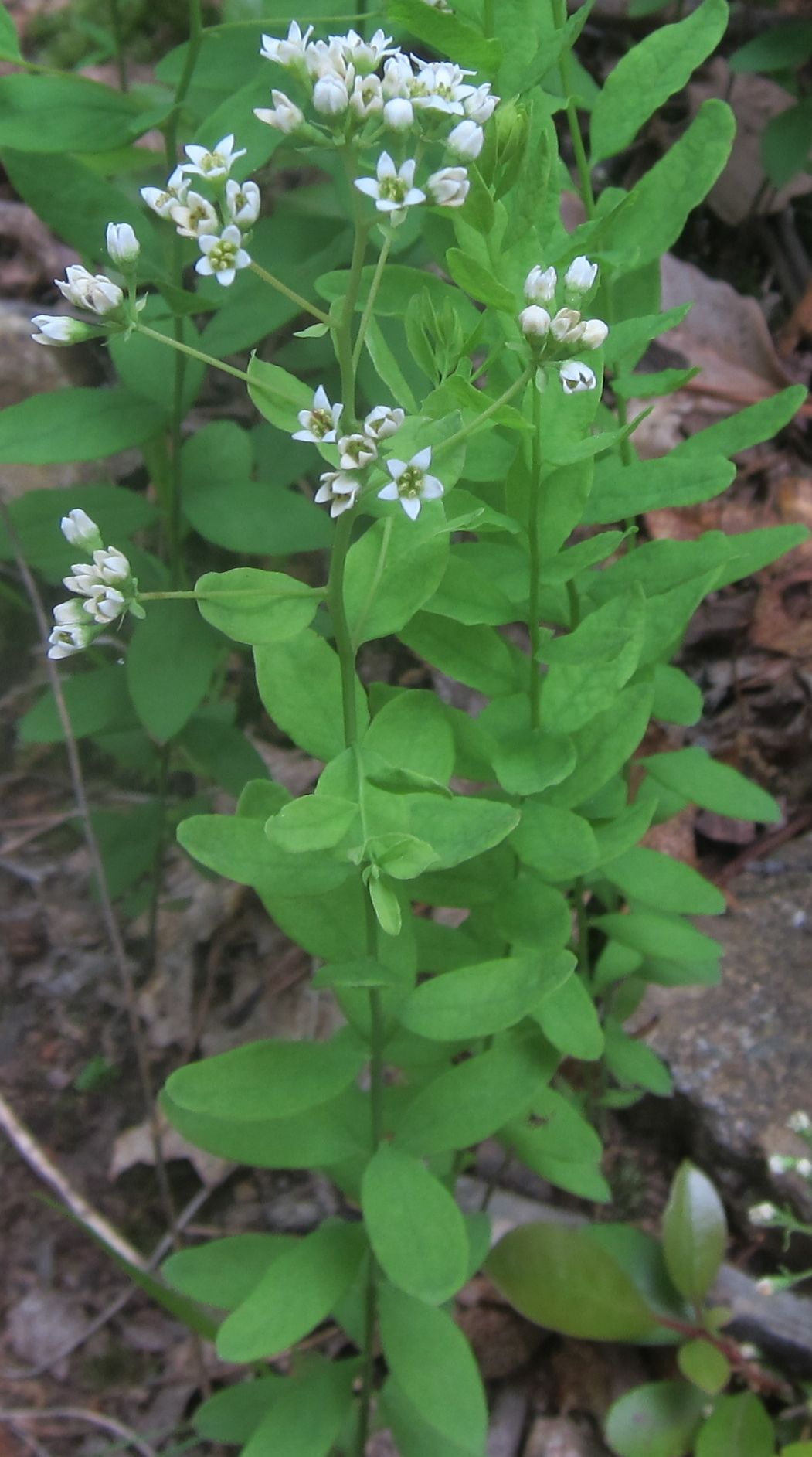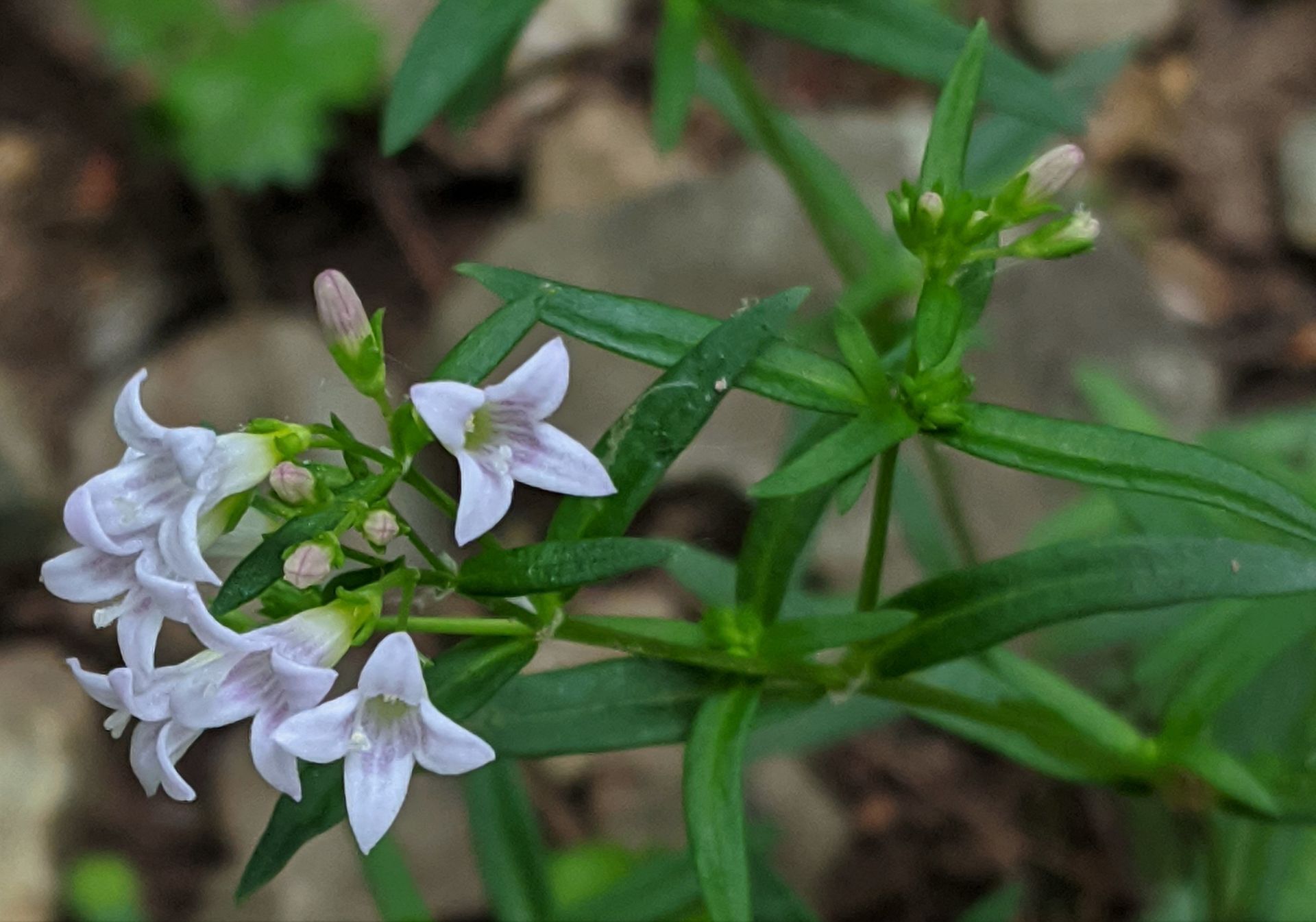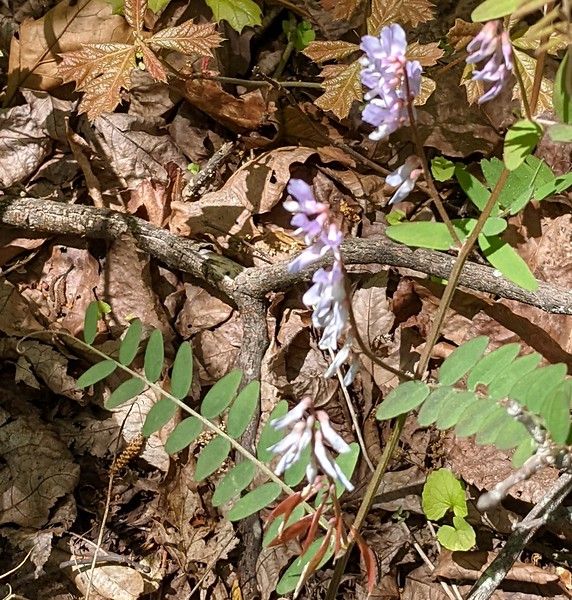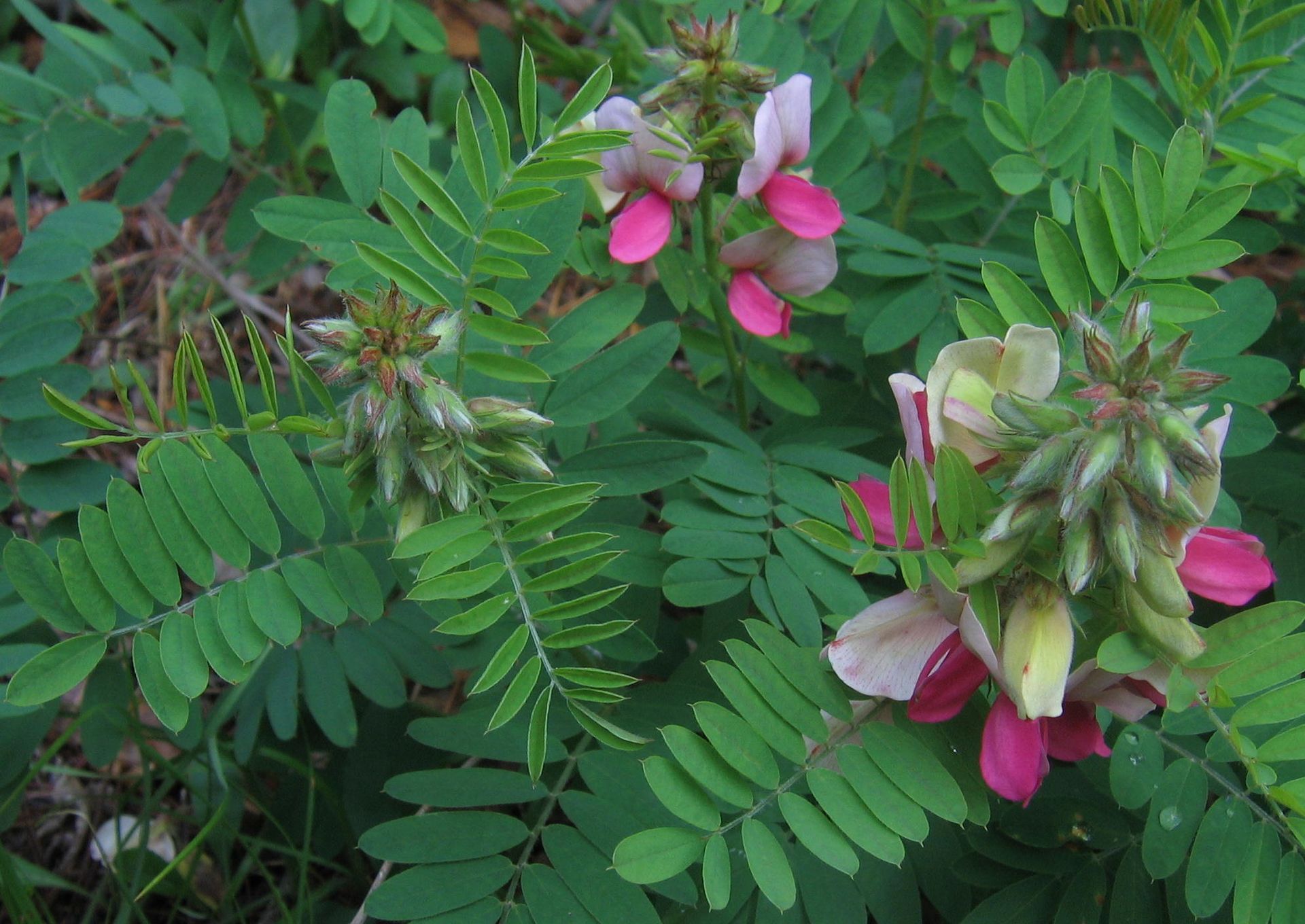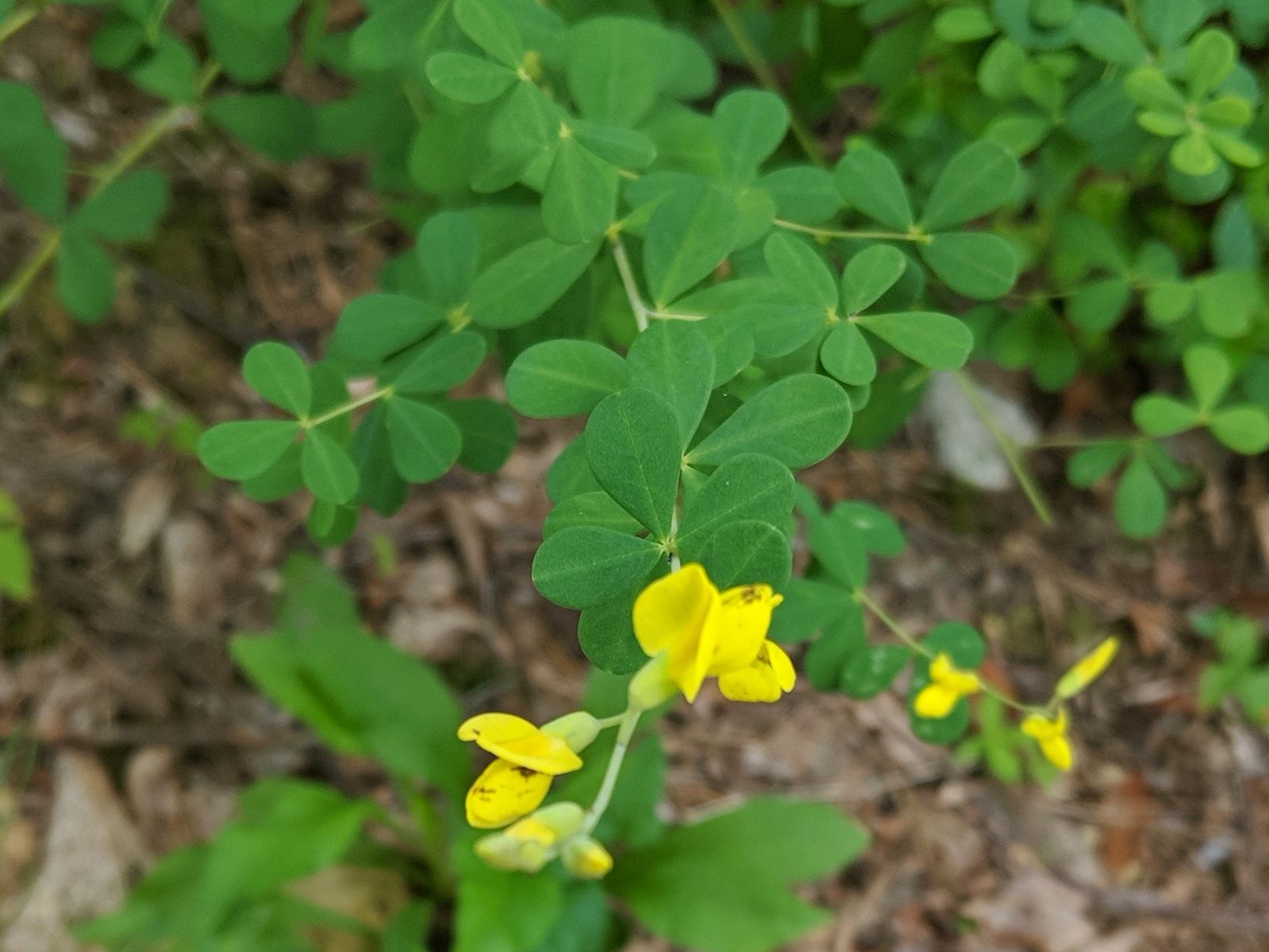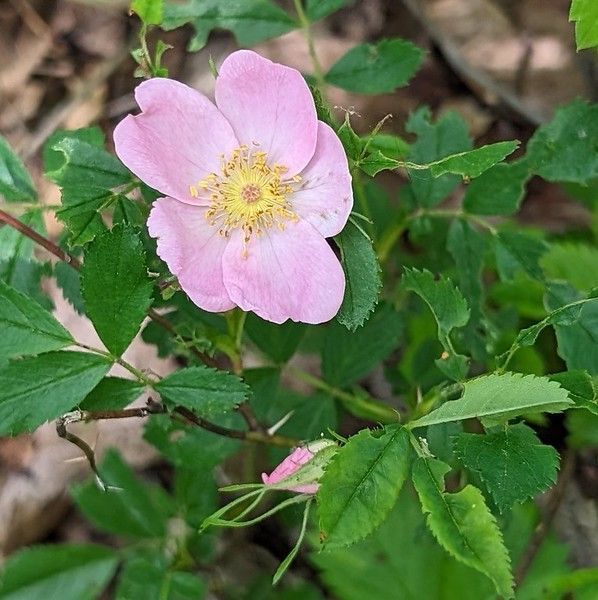What's that Flower?
By Richard Stromberg
Continued from last month.
The Riprap Hollow loop hike is described on pages 108-111 of PATC’s “Circuit Hikes in Shenandoah National Park.” The hike starts at mile marker 90 of Skyline Drive. The circuit uses Riprap Hollow, Wildcat Ridge, and the AT. The circuit puts on a fantastic floral show in late spring.
This month shows notable plants to be seen on the way up Wildcat Ridge and on the AT.
The first set of plants bloom in spring.
Wild Geranium (Geranium maculatum) rose-purple flowers are up to one and a half inch wide and stand above the leaves. The leaves, up to four inches long and six inches wide, are deeply and irregularly cleft and the segments are again cleft or toothed at the tips.
Wild Pink (Silene carolinana) is only a few inches tall, but its inch-wide, pink or white flowers are a pleasant surprise on the trail. The petals are well-separated and notched at the tip.
Solomon’s Seal (Polygonatum biflorum) plants have a single erect or arching stem with several ovate leaves alternating along the stem. The leaves have no stem and have distinct, parallel veins. Flower clusters hang down from the leaf axils, so you must look under the plant to see them. They are shaped like elongated bells with six pointed lobes at the tip. They are greenish white or tinged yellow.
Two Violet species are found here: Arrow-leaved Violet (Viola sagittata) and Wood Violet (Viola palmata). They have typical Violet flowers: five petals with the lower petal larger or different-shaped than the side and upper pairs of petals. The plants are usually only a few inches tall and the flowers are about one inch long. Unlike the heart-shaped leaves of Common Blue Violet, Arrow-leaved Violet leaves are oblong. Wood Violet leaves have three or more lobes.
Dwarf Cinquefoil (Potentilla canadensis) half-inch, yellow flowers with five petals. Its leaves have five leaflets with teeth on the edges but not all the way to the stem of the leaflet.
The stem of young Indian Cucumber-root (Medeola virginiana) plants is topped by whorl of five to eleven four-to-five-inch egg-shaped leaves about a foot above the ground. When the plant has built up enough energy in its rootstock, it grows the stem another foot above the whorl of leaves and develops another whorl of two or three smaller leaves from which an umbel of three to ten flowers grows. The flowers hang downward beneath the top whorl of leaves. Each flower has six greenish-yellow tepals about a quarter inch long and curving back, but they are dominated by three threadlike styles that are longer than the tepals and hover above them. After pollination, berries form and their stems straighten up so they are positioned on top of the plant. In late summer the berries turn black and the center of the upper whorl of leaves turns red.
Rattlesnake Weed (Hieracium venosum) has green leaves with a pattern of large, dark red veins that you will notice even when there are no flowers. The flower head looks like a small Dandelion hoisted up in the air by a stem up to a meter tall.
Partridge-berry (Mitchella repens) is an evergreen plant with opposite, oval leaves that are up to an inch long. It creeps along the ground. White flowers grow in pairs from leaf axils. Each flower is a tube up to a half-inch long with four, pointed lobes at the tip. The fruit is bright scarlet. It is oval rather than round because the two flowers have produced a joint fruit. You can see the remnants of the sepals of the two flowers at the end of the fruit.
Large Whorled Pogonia (Isotria verticillata) is an orchid. It has a whorl five leaves atop the foot tall stem. It has a single flower on a two-inch stem atop the leaf whorl. The lower petal or lip is white and crested in the middle, but is not very long. The other two petals are greenish and hover over the lip like a hood. The sepals are very long and thin. They are green blending into dark purple-brown at the pointed tips. One sepal points up, the other two point down.
Wild Yam (Dioscorea villosa) is a vine up to five meters long, twining around other plants. It has shiny, six-inch, heart-shaped leaves that have prominent veins that circle from the stem to rejoin at the pointed tip. The leaves grow in whorls around the stem. In early spring, first whorl of leaves is an eye-catching, shiny light green. The plants are dioecious (male and female flowers grow on separate plants). The tiny, six-tepal flowers grow on long, branching strands. The female flowers are on top of quarter-inch long ovaries. Fruits are in three sections and hang on the dead vines through the winter.
Bastard Toadflax (Comandra umbellata) is a small perennial, less than a foot tall. It has alternate, entire leaves. The inflorescence grows at the top of the plant, starting out as a cluster of white balls. Each ball opens into a quarter-inch flower with five, pointed, white petals. Five yellowish anthers show inside. As the plant ages, the flower clusters may branch and spread.
The following set of plants bloom in summer.
Longleaf Bluets (Houstonia longifolia) flowers are a tube with four pointed lobes curling out. They grow in a cluster atop the stem. They are pale blue to white. The leaves are up to 1.5 inches long and 1.5 to 6 millimeters wide.
Hairy Vetch (Vicia villosa) is covered with one-to-two-millimeter hairs. It is a climbing vine with tendrils at the end of branches. Racemes can have up to 40 violet and white flowers, all on one side of the stem. Each flower has the typical pea family shape: two petals at the bottom joined to form a keel, an upright banner petal at the top and two almost unnoticeable wing petals.
Goat’s Rue (Tephrosia virginiana) have typical pea flowers. The upright banner of the one-half to three-quarter-inch flower is white to light yellow, forming a background to the bright pink joined petals called a keel. One or more flowers appear among the leaves at the end of branches. The leaves are pinnate (resembling a feather with leaflets on opposite sides of an elongated axis).
The following plants are found on the AT between the Wildcat Ridge and Riprap trailheads.
The Yellow Wild Indigo (Baptisia tinctoria) plant is a shrubby perennial up to three feet tall. It grabs your attention by sticking branches out into the trail with racemes of half-inch, bright yellow flowers. The flowers have the typical pea flower form with the banner, keel, and wings. The leaves consist of three leaflets and have no stems.
Whorled Coreopsis (Coreopsis verticillata) has yellow, daisy-type flower heads up to two and a half inches across. It has divided leaves made up of long, very narrow segments that seem to form a mesh below the flower.
A
Pasture Rose (Rosa carolina) flower has five, large, round, pink petals, completely separated from each other. A narrow claw that attaches each petal to the center of the flower underneath the stamens and styles. Numerous stamens fill the center of the flower. Fruits are bright red balls that hang on through winter.

